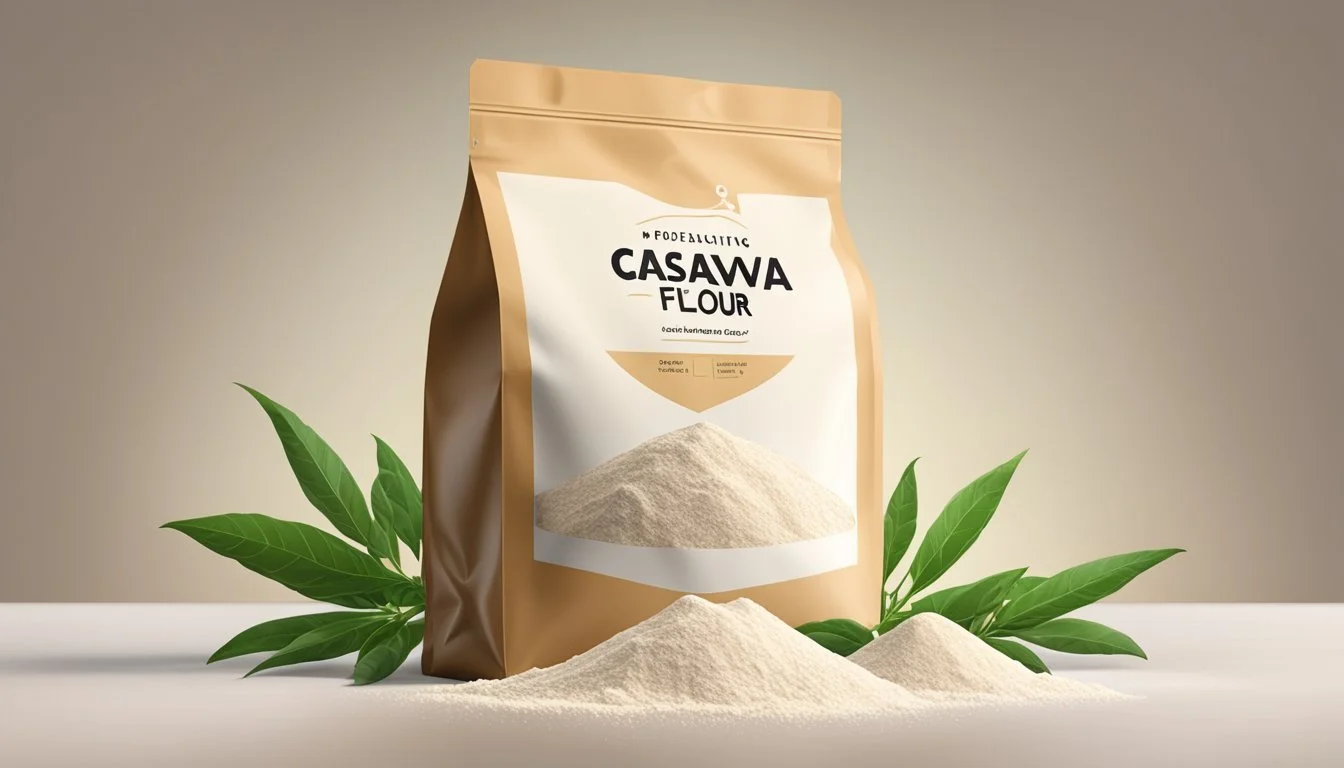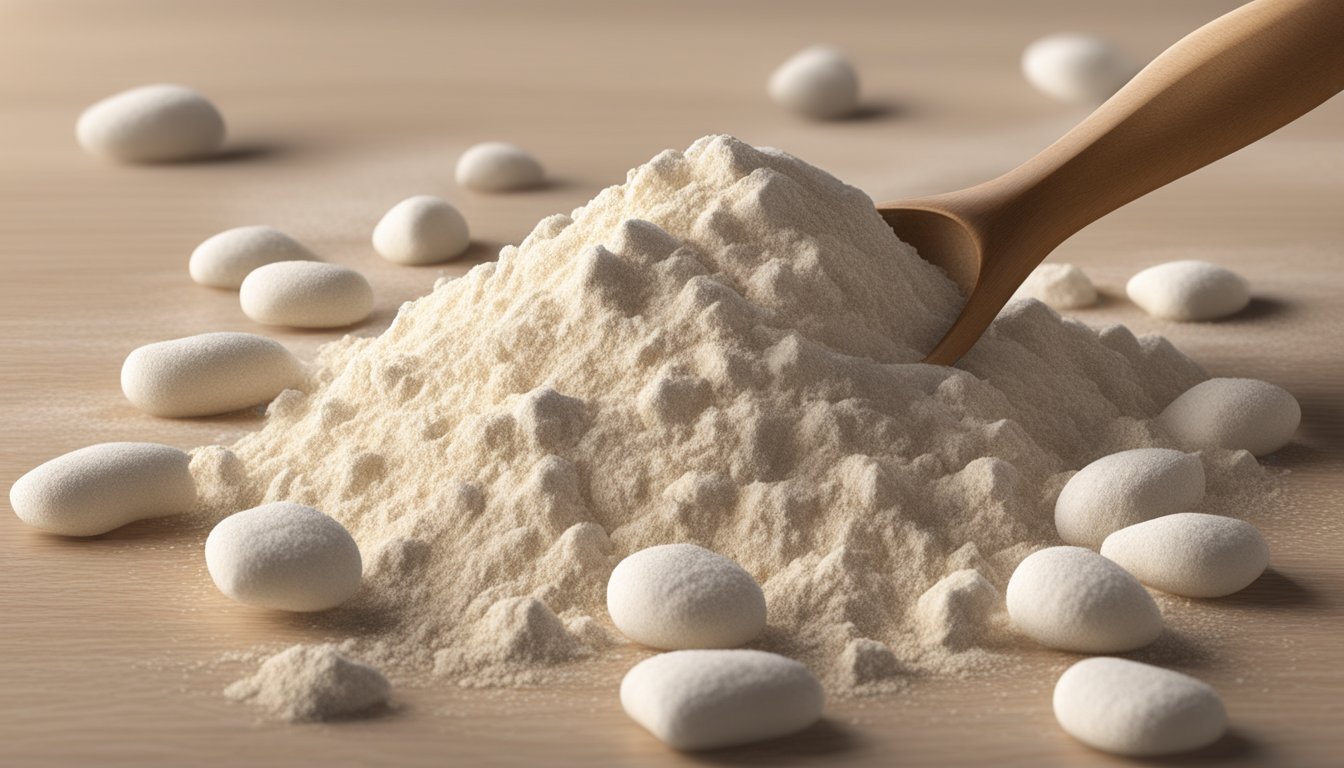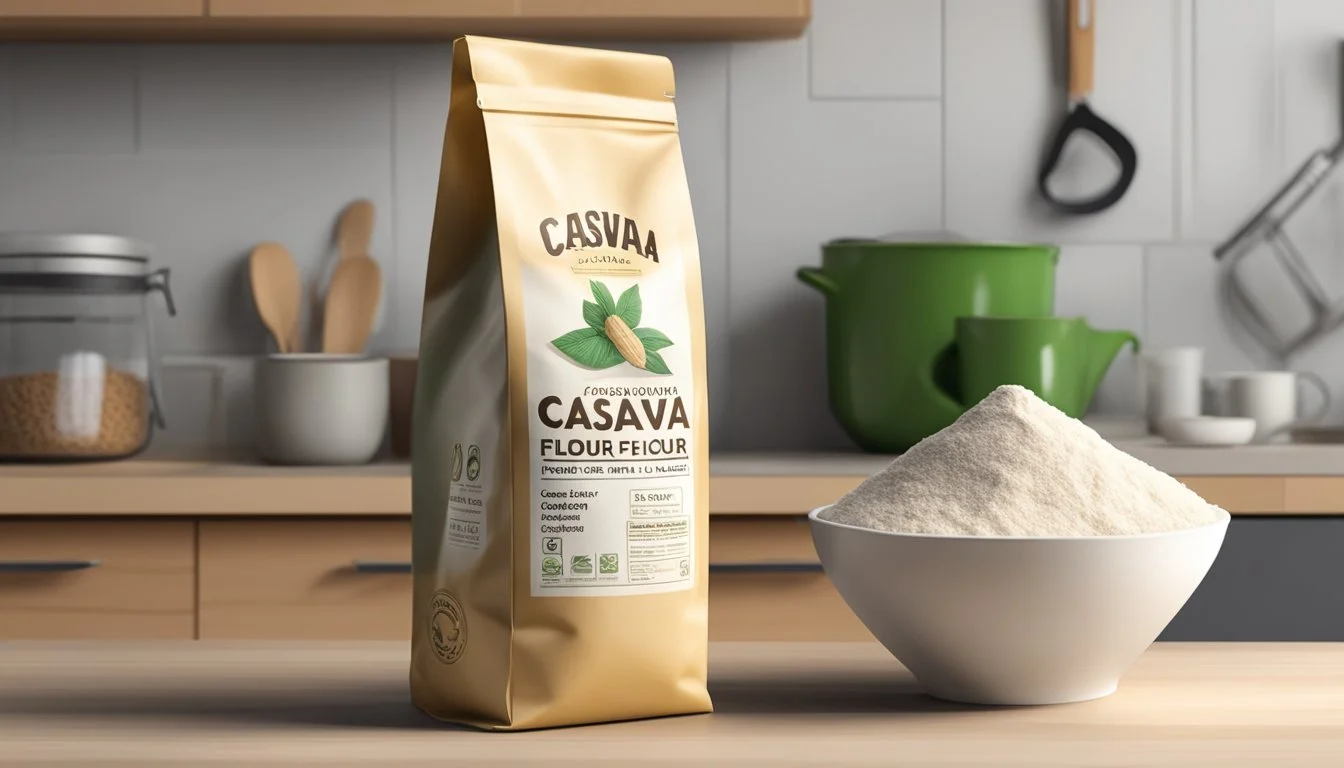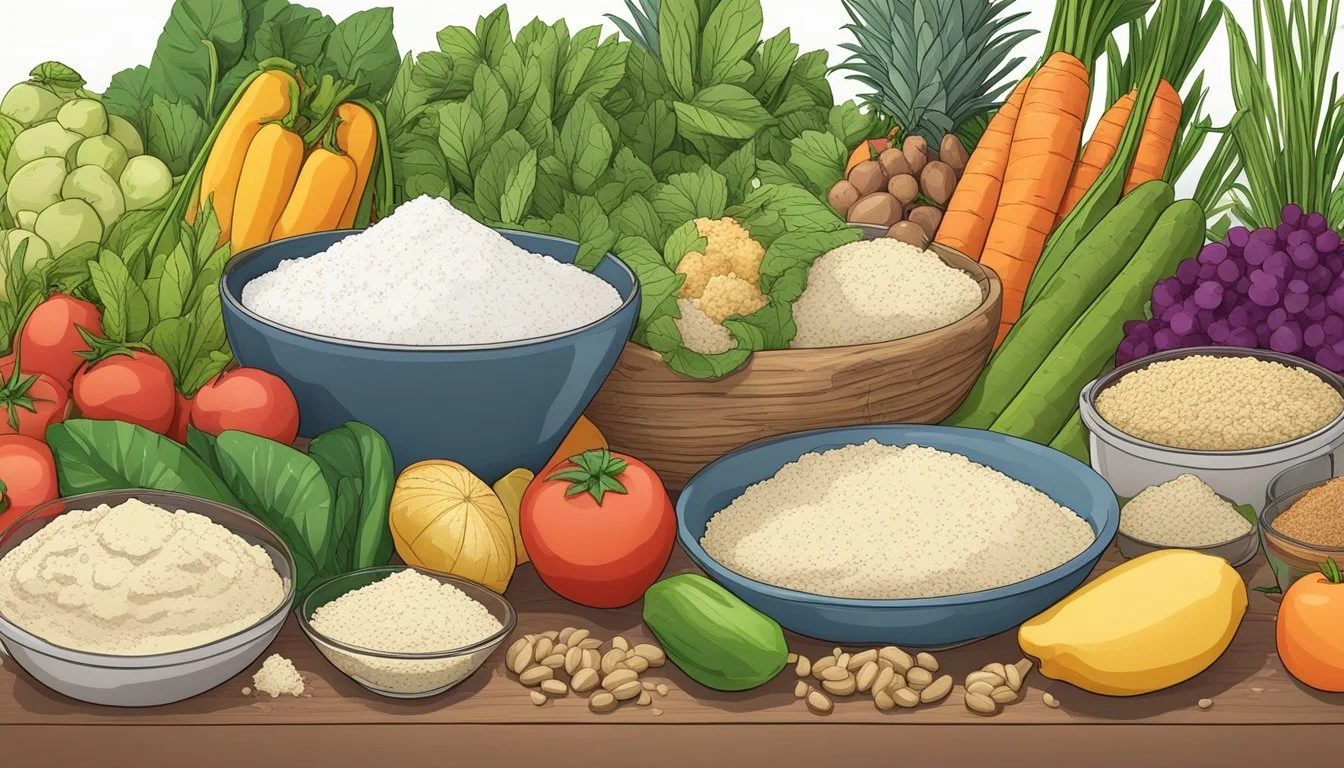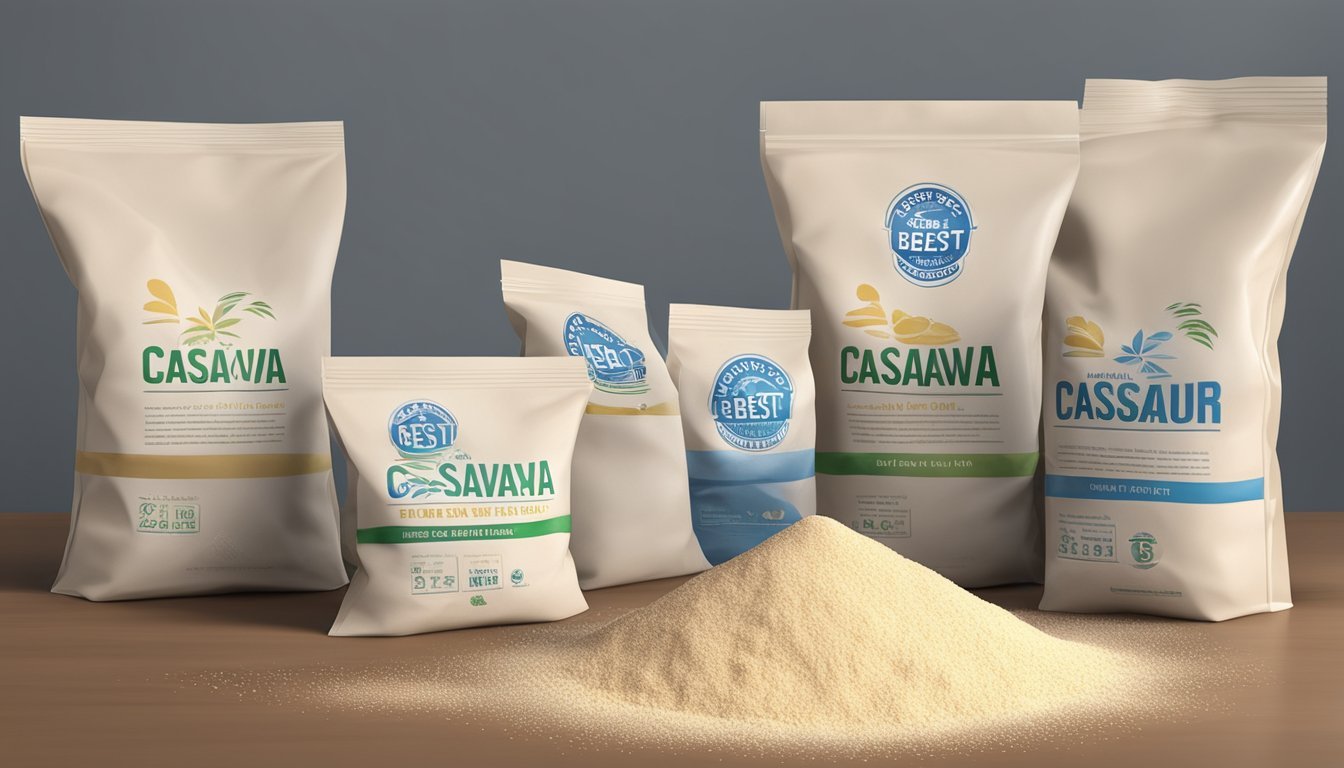Does Cassava Flour Go Bad?
Understanding Shelf Life and Storage Tips
Cassava flour is a gluten-free alternative to traditional wheat flours, rising in popularity among those with gluten sensitivities or those who simply prefer gluten-free options. Made from the cassava root, a staple in many parts of South America, Asia, and Africa, this flour is known for its neutral taste and fine texture. As a gluten-free flour, it provides a healthier option for those with celiac disease or gluten intolerance, while also offering versatility in various recipes.
The shelf life of cassava flour can be a concern for consumers, as it can indeed go bad like any other natural product. Understanding the signs of spoilage is important to ensure both the quality and safety of the flour. Fresh cassava flour should have a slight nutty aroma and a bright white color. Any presence of a rancid or sour smell, a change in color or texture, or a bitter taste indicates that the flour has gone bad and should not be used.
In comparison to other gluten-free flours, cassava flour has its own unique profile. While it may not provide the same level of protein as some alternatives like chickpea or whole wheat flours, it offers more fiber than rice flour, although still less than whole wheat options. Cassava flour is also lower in vitamins and minerals compared to enriched flours, but its gluten-free and nut-free properties make it a beneficial choice for those with related allergies and for those who follow a grain-free diet.
Understanding Cassava Flour
Cassava flour derives from the root of the cassava plant, serving as a popular gluten-free alternative to wheat flour rich in carbohydrates and providing a distinct nutritional profile.
Origins and Basics
The cassava plant, which yields cassava root, is indigenous to South America and also thrives in parts of Asia and Africa. Cassava flour is made by peeling, drying, and grinding the cassava roots. Tapioca flour, also from cassava, differs from cassava flour; it's a refined starch extracted from the plant, while cassava flour is the whole root, fiber included.
Cassava vs. Wheat Flour
Cassava flour is a gluten-free flour, unlike wheat flour, which contains gluten, a protein that provides structure and elasticity in traditional baking. Cassava flour's structure is different due to its lack of gluten, which makes it a bit too dense and sticky for a direct 1:1 substitution with all-purpose wheat flour in recipes.
Wheat Flour: Contains gluten, higher in protein.
Cassava Flour: Gluten-free, lower in protein, more suitable for those with gluten intolerance or celiac disease.
Nutritional Profile
Cassava flour is high in carbohydrates and low in saturated fat, making it an energy-rich option. Its nutritional content includes:
Vitamins: Vitamin C and folate.
Minerals: Potassium, magnesium, and iron.
Fiber: Contains resistant starch, beneficial for gut health.
Despite its carbohydrate content, cassava flour does not provide a significant amount of protein. Here's a brief comparison:
Nutrient Cassava Flour Wheat Flour Carbohydrates High High Protein Low Higher Fiber Moderate Varies Vitamins Some Enriched with select vitamins Gluten None Contains
Cassava flour offers an alternative for those seeking gluten-free options or those who prefer the taste and texture it provides in cooking and baking.
Characteristics of Cassava Flour
Cassava flour is a staple ingredient produced from the root of the cassava plant. This section explores the unique taste and texture of cassava flour, its role in the culinary world, and its usefulness in gluten-free baking.
Taste and Texture
Cassava flour is known for its neutral, slightly nutty flavor that can be a complement to various recipes. Unlike other flours, it lacks any strong taste, making it versatile in cooking and baking. Its texture is fine and powdery, which contributes to a smooth consistency in the final product, be it bread or sauce.
Culinary Uses
Cassava flour is a popular choice as a thickener in sauces and gravies. Besides being used for bread, cakes, and other baked goods, it serves as an excellent base for cookies and brownies. Its usability extends beyond baking to being a primary ingredient in creating gluten-free versions of familiar foods.
Gluten-Free Baking
Within gluten-free baking, cassava flour is highly prized for its ability to produce results similar to that of traditional wheat flour. It retains moisture well, which is crucial for preventing gluten-free bread and cakes from becoming too dry. The light color of cassava flour doesn't alter the appearance of baked goods, ensuring a bright, appealing color in items like pastries and cookies.
Proper Storage of Cassava Flour
Proper storage of cassava flour is crucial to maintain its quality and extend its usability. A cool, dry place away from direct sunlight is optimal for preserving the flour's integrity.
Ideal Conditions
Cassava flour thrives in a cool and dry environment. It should be stored at a stable temperature, well away from any sources of heat or moisture. Excessive heat can lead to spoilage, while moisture can cause clumping and create an environment conducive to bacteria growth.
Shelf Life Expectancy
The shelf life of unopened cassava flour can range up to 24 months when stored correctly. Once opened, using the flour within 12 months is advisable to enjoy its best quality. Storing beyond this timeframe may result in a loss of texture and flavor quality.
Storage Tips
To ensure cassava flour's longevity and freshness:
Keep the flour in its original package if resealable, or transfer to an airtight container after opening.
Store in a pantry or cabinet that maintains a consistent temperature and is free of dampness.
Limit exposure to direct sunlight, as this can degrade the flour’s quality over time.
Freezing cassava flour is an option for extending its shelf life. However, ensure it is well-sealed in an airtight container to prevent freezer burn.
Always consult the USDA guidelines for up-to-date food storage recommendations.
By following these storage tips, one can maximize the shelf life and quality of cassava flour.
Identifying Spoilage
When it comes to cassava flour, understanding the signs of spoilage is crucial for health safety and maintaining the quality of your dishes. Sensory checks are a reliable method to determine spoilage, with visual and olfactory cues being primary indicators. Here is how one can identify if cassava flour has gone bad.
Sensory Check
Smell: Fresh cassava flour has a subtle, nutty, or slightly sweet aroma. Spoilage is often accompanied by a distinct sour or rancid odor, suggesting bacterial growth or oxidation.
Fresh Cassava Flour Spoiled Cassava Flour Neutral/ Nutty Smell Sour/ Rancid Smell Light Creamy Color Discolored Spots Fine, Powdery Texture Clumps or Hardened lumps
Color and Texture: Cassava flour should be light brown or cream in color and possess a fine, powdery consistency. The presence of mold growth or discoloration signifies that it should not be consumed. Any clumping or hardening also indicates that moisture has affected the flour, and it might have lost its freshness.
Health Risks
Consuming spoiled cassava flour can lead to foodborne illnesses due to the presence of bacteria and other pathogens. Cassava contains compounds that can produce cyanogenic glycosides, which are toxins that may lead to health complications. If there are any signs of spoilage or if it is past the expiration date, it is strongly recommended that the flour not be consumed to avoid potential health risks.
Health Considerations
The consumption of cassava flour carries certain health considerations, particularly relating to digestion and allergen information. As a gluten-free alternative to traditional flours, it may cater to those with specific dietary preferences or restrictions, such as adherents to paleo, Whole30, or nut-free diets.
Cassava Flour and Digestion
Cassava flour is recognized for being gluten-free, making it a suitable option for those with celiac disease or gluten sensitivity. Its inclusion in diets like paleo and Whole30 adds versatility for individuals seeking grain-free and unprocessed food options. However, some individuals might experience digestive issues due to the high carbohydrate content, which can impact blood sugar levels. While it provides a source of carbohydrates, cassava flour is not rich in fiber compared to other alternatives, which can be significant for those managing gut health or digestive issues.
Paleo-friendly: Yes, fits within the dietary restrictions.
Whole30: Acceptable for use during the Whole30 program.
Blood Sugar: Might cause a spike due to high carb content; caution advised for those with diabetes.
Obesity: Should be consumed in moderation due to calorie content.
Allergen Information
Individuals with food sensitivities or allergies will find cassava flour to be a safe ingredient as it is naturally nut-free. This quality is important for those who are looking to avoid common allergens. Moreover, the absence of gluten positions cassava as a go-to flour alternative for consumers prioritizing allergen-free diets. However, one should ensure the product is processed in a facility that does not handle allergens if cross-contamination is a concern.
Nut-free: Naturally free from nuts and suitable for those with nut allergies.
Gluten-free: Does not contain gluten, aligning with dietary needs of those with gluten-related disorders.
Cassava Flour in Different Diets
Cassava flour, a product derived from cassava root, is frequently utilized in various dietary frameworks due to its grain-free and gluten-free properties. It offers an alternative to traditional flours providing certain nutritional benefits like fiber and minerals, although it is less protein-rich compared to other flour substitutes.
Paleo and Whole30
Paleo Diet: Individuals adhering to the Paleo diet often seek out foods that mimic the nutritional profiles thought to be consumed by early humans. Cassava flour is considered paleo-friendly because it is a natural, unprocessed plant product. It serves as a substitute for non-Paleo flours derived from grains.
Nutrition: Cassava flour is a source of carbohydrates and fiber, although it contains minimal protein and fat. It offers different minerals but is less dense in nutrients compared to some other Paleo-approved foods.
Whole30: The Whole30 program emphasizes whole, unprocessed foods. Cassava flour complies with Whole30 guidelines as it is free from grains and additives, making it a suitable component for this 30-day dietary reset.
Grain-Free and Gluten-Free
Grain-Free Diets: Those on grain-free diets, which exclude all grains for various health or dietary reasons, can incorporate cassava flour as a staple ingredient in their cooking and baking.
Gluten-Free: As cassava flour does not contain gluten, it is ideal for people with celiac disease or non-celiac gluten sensitivity. It can be used as a 1-to-1 substitute in many recipes that traditionally use wheat flour.
Nutrition: Compared to grain-based flours, cassava flour has a similar fiber content to brown rice flour but falls short of the fiber levels found in whole wheat flour. It also typically has lower levels of vitamins and minerals than enriched wheat flours but is still a useful alternative for those with specific dietary restrictions.
Frequently Asked Questions
Does Cassava Flour Expire?
Yes, cassava flour does go bad. Shelf life for unopened cassava flour is up to 2 years when stored in a cool, dry place. Once opened, it should be used within several months for best quality.
How Can You Tell if Cassava Flour Has Gone Bad?
Odor: Fresh cassava flour should have a neutral scent. A rancid or sour smell indicates spoilage.
Color: It should be bright white. Any discoloration could mean it's past its prime.
Taste: A slight sweetness is normal, while a bitter taste suggests it's no longer good.
Texture: Look for a fine, powdery consistency. Clumping or hardening is a bad sign.
How Does Cassava Flour Compare to Other Flours?
Cassava flour is a gluten-free flour option. It has more fiber than rice flour, but less than whole-wheat flour and some other gluten-free alternatives such as coconut or almond flour. Compared to these, it is lower in fat and calories.
How Do You Store Cassava Flour?
Store cassava flour in an airtight container in a cool, dry place to extend its shelf life. Refrigeration can help keep it fresh once opened. Avoid exposure to moisture and heat, as these can cause spoilage.
Is Cassava Flour Nutritious?
Although cassava flour is gluten-free and suitable for those with allergies, it's lower in vitamins, minerals, and protein compared to options like whole-wheat flour. It's an acceptable alternative for those seeking a gluten-free diet, but it’s not as nutrient-dense as some other flours.
Cassava Flour in Global Cuisine
Cassava, a root vegetable native to South America, also plays a significant role in African and Caribbean cuisines, providing a gluten-free flour alternative. Its versatility is evident in a variety of traditional dishes, making it an essential ingredient in many regional culinary practices.
Afro-Caribbean Dishes
In Afro-Caribbean cuisine, cassava flour is a staple ingredient known for its gluten-free properties and ability to create a diverse array of baked goods. Jamaican bammy is a classic example, where the flour is used to make flatbreads that are often served with fried fish. Another popular dish is cassava pone, a dessert that originated in Trinidad and Tobago, combining the flour with coconut, pumpkin, and spices to create a sweet treat.
South American Recipes
South America, the origin of cassava, showcases the root in many forms. In Brazil, farofa, a toasted cassava flour mixture, is ubiquitously served alongside rice and beans. The flour is also utilized to produce tapioca, which forms the base for crepes that can be filled with savory or sweet fillings. These dishes illustrate cassava flour's adaptability in creating textures that range from crunchy to chewy, pivotal for South American cuisine's distinct character.
Safety Precautions with Cassava Flour
When dealing with cassava flour, consumers need to be aware of the potential for cyanogenic glycosides that can lead to cyanide poisoning if not handled properly. The following safety precautions are essential for maintaining both the reduction of toxins and general food safety.
Reducing Toxins
Cassava plants naturally contain cyanogenic glycosides, compounds that can release hydrogen cyanide when the plant cells are damaged. There are two types of cassava - sweet cassava and bitter cassava. Sweet cassava contains lower levels of these glycosides, making it less toxic. However, both varieties require proper preparation to ensure safety:
Peeling: Remove the skin as it contains the highest concentrations of cyanogenic glycosides.
Soaking and Rinsing: Soak the cassava in water and rinse it to help leach out the toxins.
Cooking: Heat effectively breaks down cyanogenic glycosides; cassava flour should never be consumed raw.
Food Safety
Ensuring cassava flour has not gone bad is vital for food safety. Spoiled cassava flour can harbor harmful bacteria and show signs of spoilage:
Odor: Fresh cassava flour should have a neutral aroma. A rancid or sour smell indicates spoilage.
Taste: A bitter taste can suggest contamination and spoilage.
Visual Signs: Look for clumping or hardening. The flour should be fine and powdery.
Furthermore, to maintain food safety:
Storage: Keep cassava flour in a dry, cool place, away from moisture and pests.
Shelf Life: Monitor the use-by dates. Even if the flour looks and smells fine, it's safest to discard any past its expiry.

